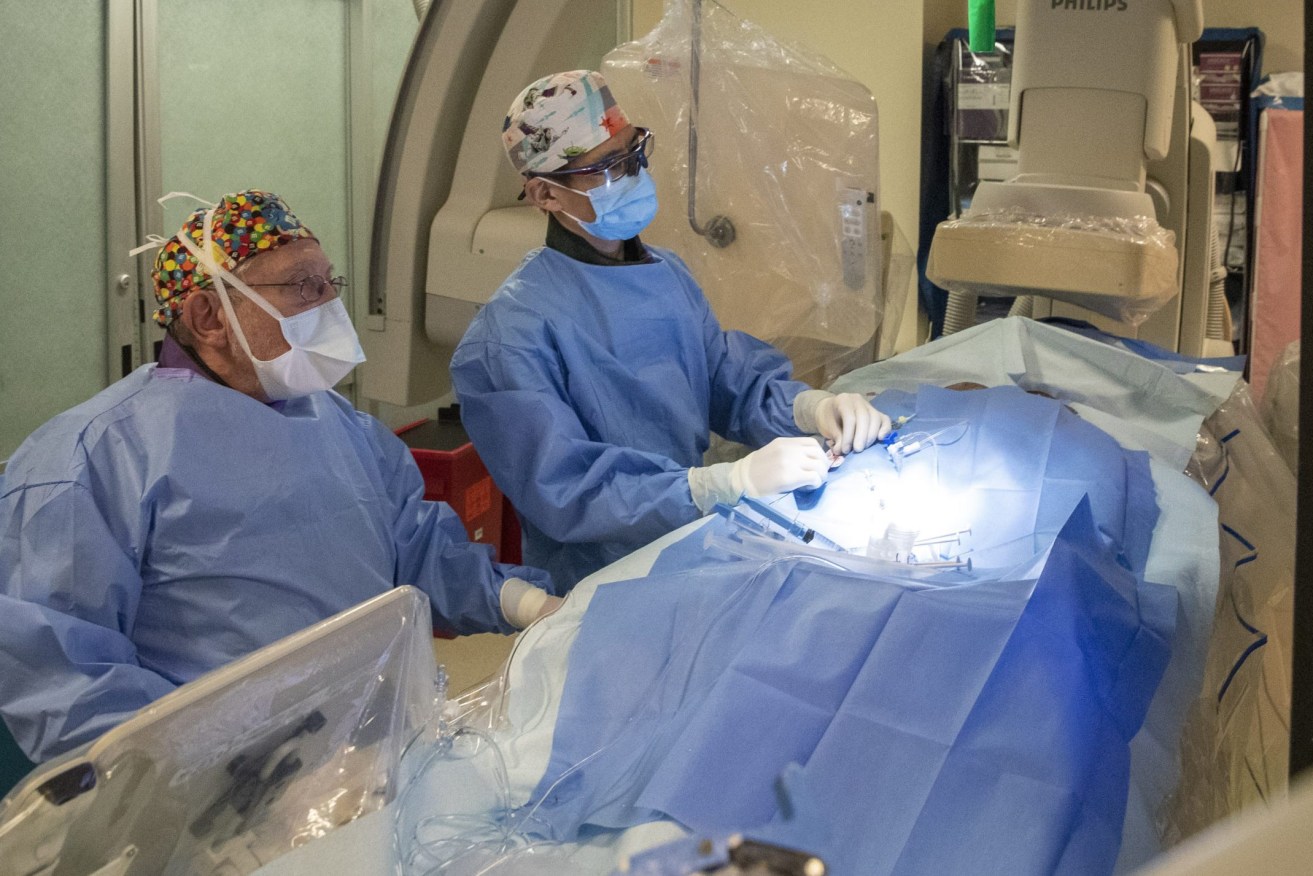‘Scandalous’ seven-year wait for elective surgery as patients left to suffer
Elective surgery patients are waiting up to several years on hidden waiting lists to see specialists in hospital outpatient clinics, the Australian Medical Association says.

Postponement of elective surgery during the coronavirus crisis will cause major backlogs even once the pandemic is over. (Photo: AP Photo/Mary Altaffer)
Elective surgery patients can be referred to see a specialist in a public hospital outpatient clinic, or in a private clinic where they generally have to pay out-of-pocket ahead of joining elective surgery wait lists.
There is no reliable national data on how long it takes patients to see a specialist in an outpatient clinic but it can be years, AMA president Professor Steve Robson said.
“These hidden figures are a scandal that affect hundreds and thousands of patients and impact a health system already in logjam, including general practice that has to deal with the pressure of looking after many of these patients in the meantime,” he said.
“Elective surgery waiting times are reported nationally each year, but these numbers don’t reflect the time someone waits to see the specialist in an outpatient clinic.
“How can any system properly operate or be properly managed if we don’t know how many patients are waiting for care?”
Public hospital outpatient appointments are scheduled by levels of urgency.
Specialist consultations are recommended within 30 days for the most urgent patients, and within 365 days for the least.
The limited data that is available – with not all Australian jurisdictions reporting it – shows many states are falling short of the performance targets, according to an AMA report launched on Friday.
Patients requiring urgent neurosurgeon appointments can wait up to 930 days in Victoria, and for an ear, nose, and throat appointment, the wait can be more than 1400 days.
In Queensland, the wait for an ear, nose, and throat appointment can be nearly 700 days, and the wait for an urgent gastroenterology or rheumatology appointment is more than 150 days.
About 250,000 patients in Queensland were waiting for appointments at hospital outpatient clinics, Prof Robson said.
Patients waiting to see a specialist to get them on the official surgery waiting list could often develop other health issues during that time, costing the system more, he said.
“The only way we can fix our hospital system is by having total transparency on the number of people who are waiting for care — this means counting people from the time the general practitioner refers them to a specialist.”
While the AMA couldn’t nail down just how many patients were on hidden waiting lists, it said thousands of them were becoming so unwell while waiting they ended up in emergency care.
“We’re seeing it in emergency departments every day,” representative Dr Sarah Whitelaw said.
Patients were unable to make an informed decision about whether to go through the public or private system when they didn’t have the full picture about waiting times, the AMA says.
The system also cannot be properly resourced.
The Australian Institute of Health and Welfare is working with jurisdictions towards publishing outpatient waiting times in the future but the AMA says a national recovery plan is needed to improve wait times for outpatient appointments and elective surgeries.
It’s pitched a new funding agreement with the federal, state, and territory governments, wherein the commonwealth’s contribution increases to 50 per cent for activity, and the 6.5 per cent cap on funding for public hospital services is done away with.
The agreement should fund extra hospital beds and staff and see money put towards improving hospitals’ performance, the AMA said.












